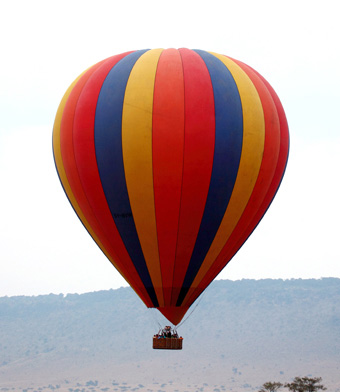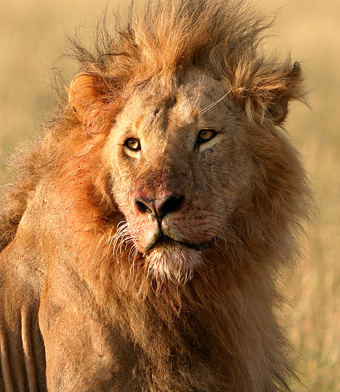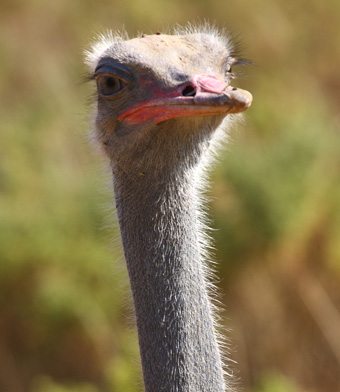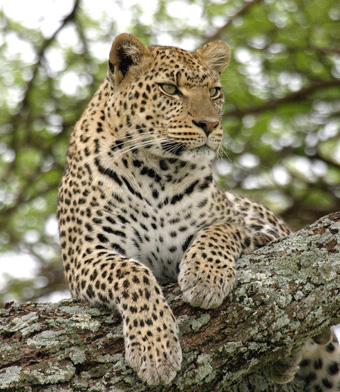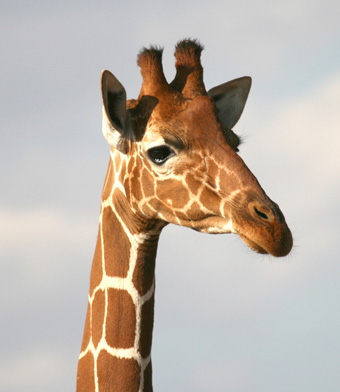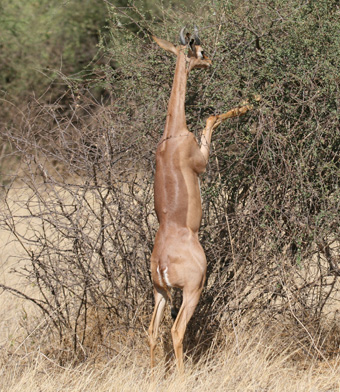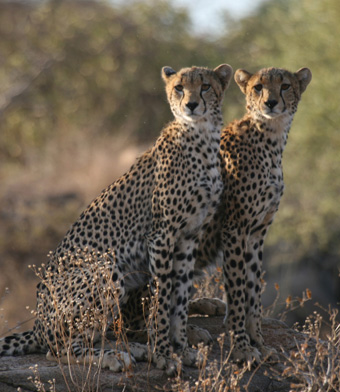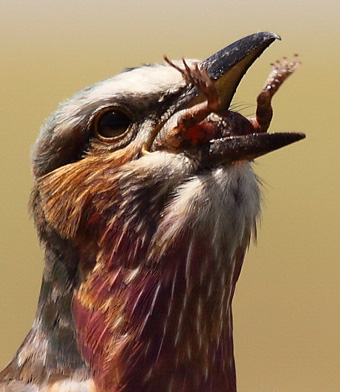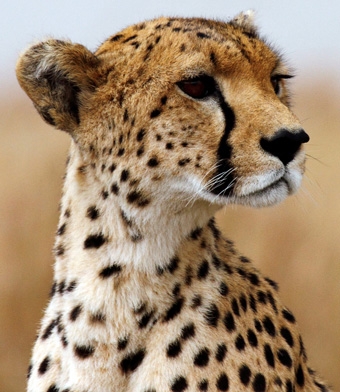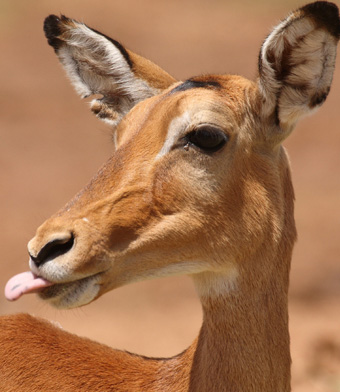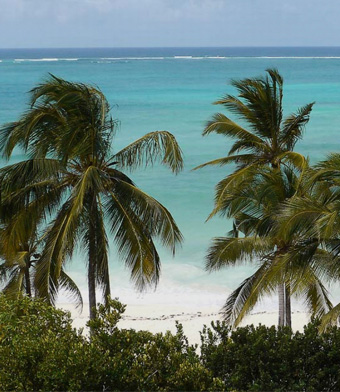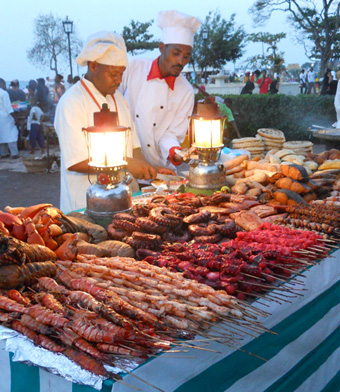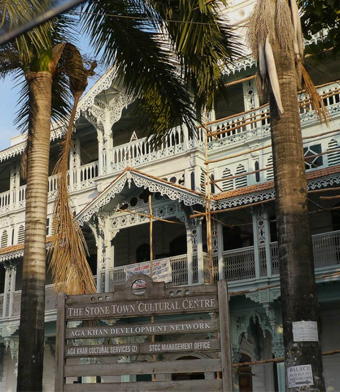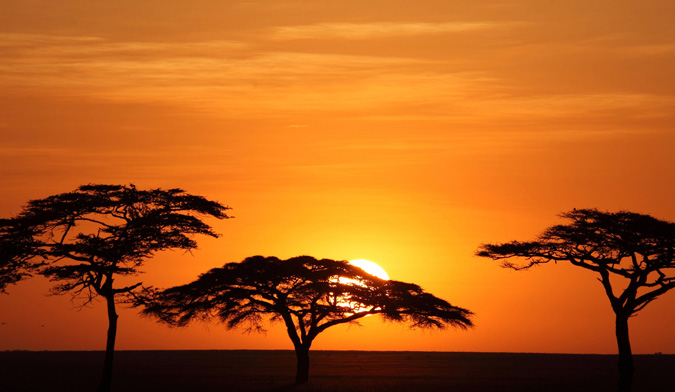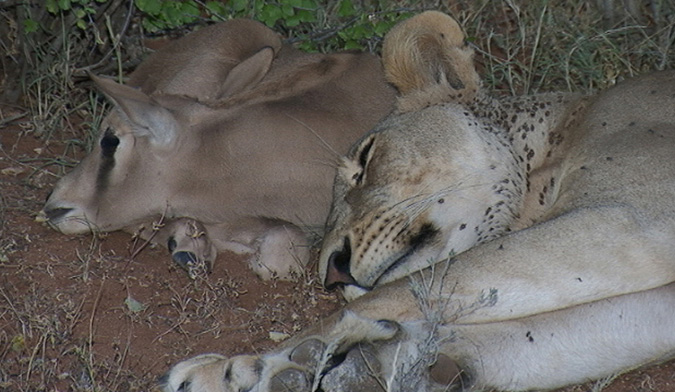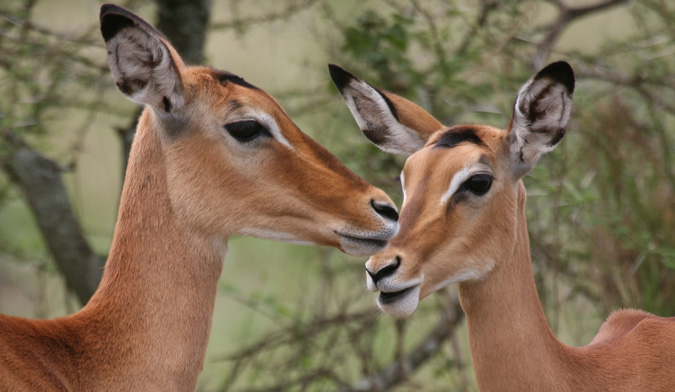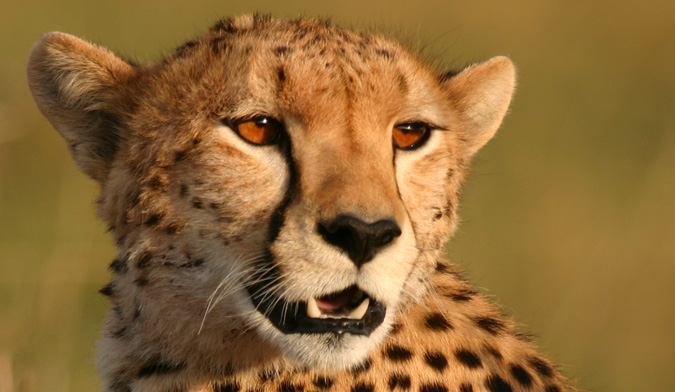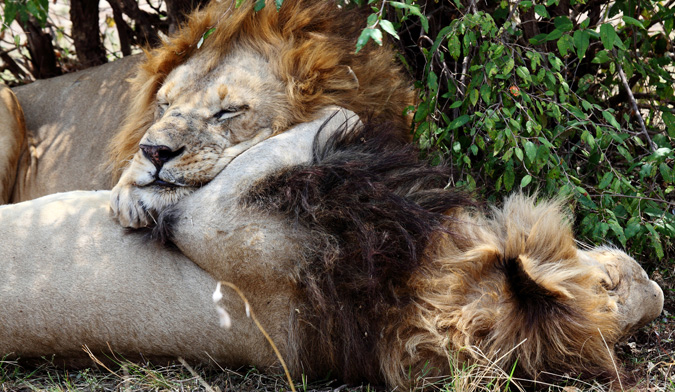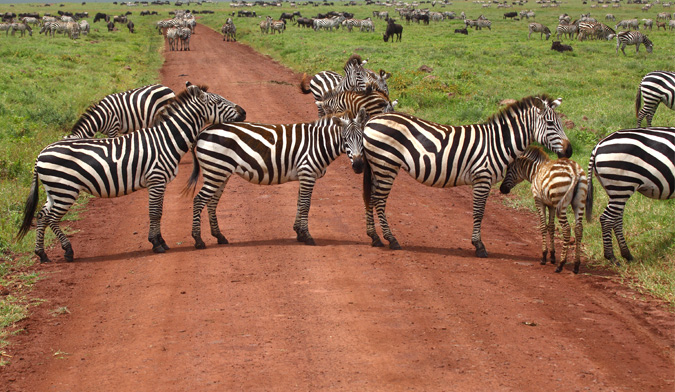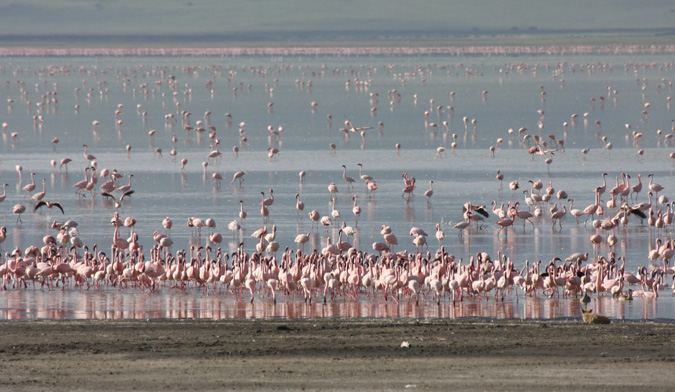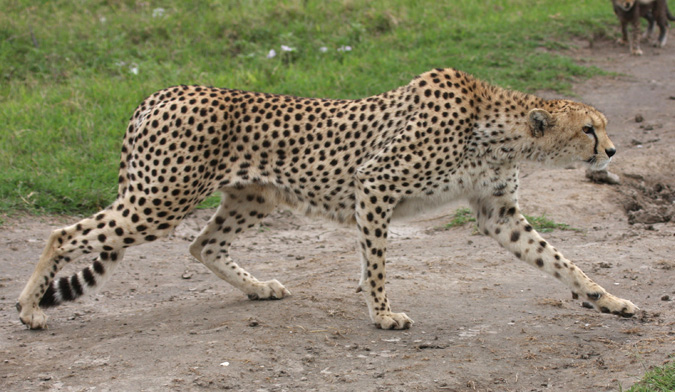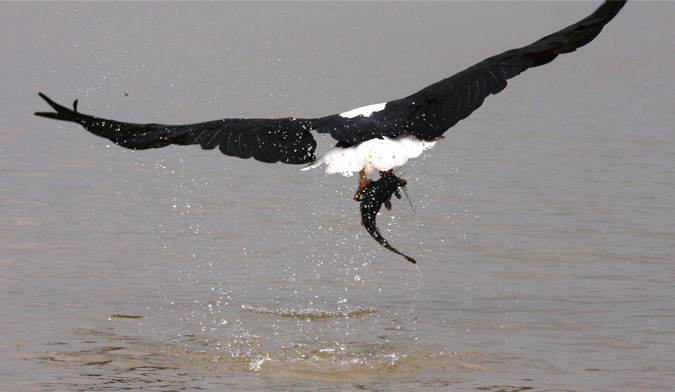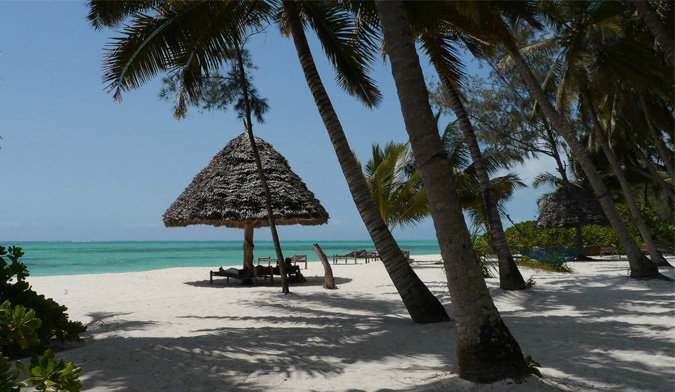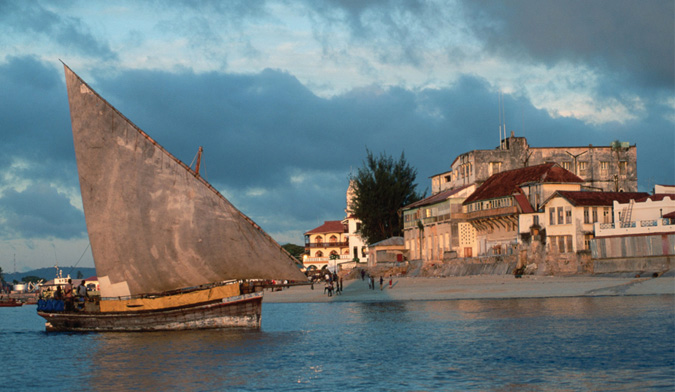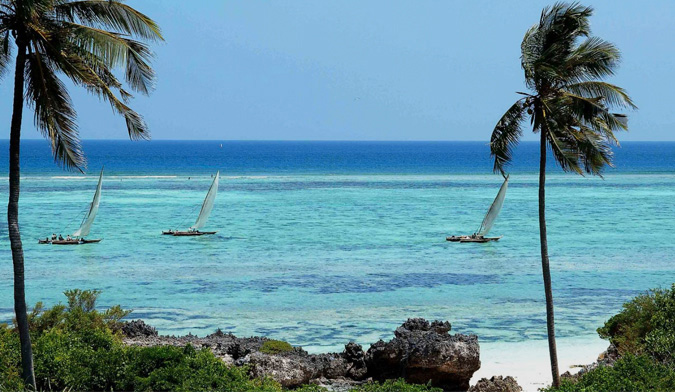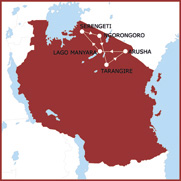 |
duration 7 nights - 7 days and a half place of departure Arusha or Kilimanjaro airport Reference route KS273 Daily on request; transport landcruiser 4x4 |
|
- itinerary
- tariff
- lodges
- parks
Day 1 Arusha
After your arrival and clearing customs at Kilimanjaro Airport, you will be met by our staff and transferred to the Arusha Coffee Lodge for bed and breakfast accommodation.
Day 2: Arusha - Tarangire Park - 120 km / about 2:00 a.m.
After breakfast, transfer to the light airport only 1km away for your short flight to Tarangire (cost of flight INCLUDED). On arrival in the middle of the park you will be met and immediately be on your first game drive finally arriving at your lodge for lunch. In the afternoon take another game drive in the park in special bush vehicles. Dinner and overnight at Tarangire Treetops.
Day 3 Tarangire Park
Full day of game viewing in the park, taking a packed lunch with you. Full board at Tarangire Treetops.
Day 4 Tarangire Park - Karatu - 180 km / about 3:00 a.m.
After breakfast, enjoy a game drive to the airstrip for a short flight to Lake Manyara (cost of flight INCLUDED). Transfer through some beautiful country for lunch at the Manor and a free afternoon to enjoy the gardens and other activities as you wish. Dinner and overnight at Ngorongoro Manor.
Day 5 Ngorongoro Crater
In the morning, after breakfast, depart to the crater for a full-day game drive. After your midday picnic, continue seeing the crater, finally returning in the evening to the lodge for dinner and overnight.
Day 6 Karatu - Serengeti Park - 300 km / about 6:00 a.m.
After breakfast, transfer back to the Lake Manyara airstrip for a flight to northern Serengeti (cost of flight INCLUDED). You arrive in time for a game drive to camp for your lunch. In the afternoon enjoy another game drive returning to camp at dusk. Dinner and overnight at The Migration camp.
Day 7 Serengeti Park
Full day of game viewing in the park. Full board at The Migration Camp.
Day 8 Serengeti Park - Arusha - 190 km / about 3:00 a.m.
After breakfast, transfer to the airport for your flight to Arusha (cost of flight INCLUDED) arriving around midday.
Prices are per person for the entire route
from 16 december 2014 to 19 december 2015
Prices parire from US$ 5,350 per person in a double room
The safaris are guaranteed with a minimum of two people from 16/12/2014 to 31/03/2015 and from 07/01/2015 to 31/10/2015 and with a minimum of four people from 04/01/2015 to 30 / 06/2015 and from 11.01.2015 to 15.12.2015.
The safari is always subject to the availability of space in the car and in the lodges, allowing us to offer a lodge of similar quality. To find space the routes may need to be done in the reverse order without changing its quality.
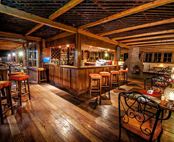 |
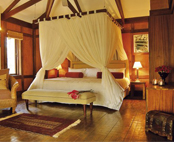 |
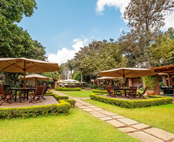 |
Arusha Coffee Lodge
the coffee plantation, which dates back to the early 1900s.
The structure is immersed in the plantation and is located in a wonderful place not far from Arusha.
It has standard rooms and suites that are all as independent villas and very spacious and comfortable, with a private bathroom.
The homely feel of the Lodge is by no means accidental as the origins of the homestead continue to emit glimpses of times-gone-by. The friendly and personable staff help create an ambiance that continues to draw appreciation from all those who visit and stay.
At the a la carte restaurant while the cozy lounge with fireplace you can stand to quietly talk with the other guests.
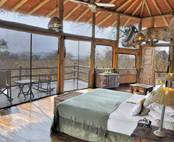 |
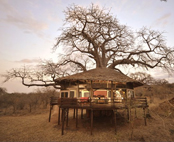 |
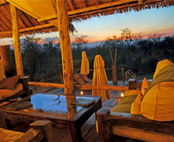 |
Tarangire Treetops
When you were a kid, the adventurous game was to climb trees, climbing as high as possible to fly with the fantasy of building a "house in the branches" ... Well Tarangire Treetops is all this.
Centred on the Main lodge, which in turn contains a magnificent baobab more than a thousand years old, this lodge has twenty tree suites built on top of the enormous baobab tree. Each room is unique with space of 65 square meters, including a private terrace which offers a breathtaking view over the plains of Africa.
Dinner can be served in the traditional Boma, festooned with lanterns hanging from trees and the rhythmic sound of the Maasai songs. Alternatively you may choose a more intimate, candle-lit, poolside dinner, from which you can enjoy, if you are lucky, the view of animals that come to drink at the lodge’s waterhole.
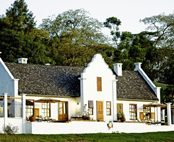 |
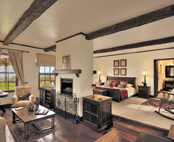 |
 |
Ngorongoro Manor
The Manor is located near the Ngorongoro Conservation Area within 1500 acres of an Arabica coffee plantation. Every detail at The Manor, built in the plantation tradition, has been designed for the comfort of its guests. Each cottage in fact, has been carefully positioned to enjoy the view of the surrounding nature, but at the same time to maintain its intimacy and privacy
This lodge has 20 suites, all elegantly furnished, with a sitting area with fireplace, to recreate the magical atmosphere of the colonial era. Every detail in this lodge, from the gardens and birdlife to the furniture and carpets all combined with impeccable service, ensures wonderful stay.
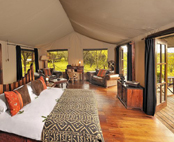 |
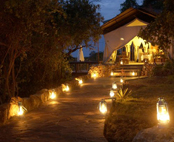 |
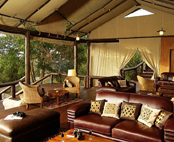 |
Serengeti Migration Camp
The Serengeti Migration Camp is immersed in the wilderness close to the Grumeti River, home to many grunting hippos. The camp has 20 luxurious tents high off the ground, which blend perfectly with the surrounding environment. Each of these tents has a veranda that circumvents the tent so as to allow a 360 view of the bush. Completing the camp is a swimming pool and restaurant where you can enjoy the unique experience of living in the nature with all the comforts of a luxury camp.
Tarangire National Park
Tarangire National Park
It is the vast number of baobab trees that first captures the eye as you enter Tarangire National Park. The gently rolling countryside is dotted with these majestic trees, which seem to dwarf the animals feeding beneath them.
Although elephant will be the primary focus of our time in Tarangire, it has plenty of other animals for us to see. It is spectacular at the height of its season, during the dry months of July to December, when the animals migrate, many of them daily, to the permanent water of the Tarangire River. The species seen is very diverse from a large population of elephants to wildebeest, zebra, buffalo, impala, gazelle, and eland range along the dry river banks. With a smorgasbord of wildlife, predators are ever present. During these months, you would be witness to the second largest concentration of wildlife per square kilometre within Africa! It is second only to Ngorongoro Crater. The animals aren't the only factor that impresses so many of our guests but the large variety of habitats provides us with amazing birdlife of over 550 species. This is a long park and as one ventures further south it becomes increasingly wild, exciting and unpredictable.
By mid March the place is brittle and dry as towering purple-grey clouds gather over the horizon heralding Biblical thunder storms of lighting and rain sweeping across the plains, creating raging torrents from the dusty luggas. Overnight some of the animals start migrating back to the vast Maasai Steppes that surround this park to pastures new until, in the month of June onwards, the sun dries the bush once more to start wildlife’s long trek back to Tarangire River. The circle of life begins.
Tarangire Park is wild and varied. To us it is a wonderful park, truly “Africa Uncompromised”.
Manyara Park
Stretching for 50km along the base of the rusty-gold 600-metre high Rift Valley escarpment, Lake Manyara is a scenic gem, with a setting extolled by Ernest Hemingway as “the loveliest I had seen in Africa”.
The compact game-viewing circuit through Manyara offers a virtual microcosm of the Tanzanian safari experience.
From the entrance gate, the road winds through an expanse of lush jungle-like groundwater forest where hundred-strong baboon troops lounge nonchalantly along the roadside, blue monkeys scamper nimbly between the ancient mahogany trees, dainty bushbuck tread warily through the shadows, and outsized forest hornbills honk cacophonously in the high canopy.
Contrasting with the intimacy of the forest is the grassy floodplain and its expansive views eastward, across the alkaline lake, to the jagged blue volcanic peaks that rise from the endless Maasai Steppes. Buffalo, wildebeest and zebra herds congregate on these grassy plains, as do giraffes – some so dark in coloration that they appear to be black from a distance.
Inland of the floodplain, a narrow belt of acacia woodland is the favoured haunt of Manyara’s legendary tree-climbing lions and impressively tusked elephants. Squadrons of banded mongoose dart between the acacias, while the diminutive Kirk’s dik-dik forages in their shade. Pairs of klipspringer are often seen silhouetted on the rocks above a field of searing hot springs that steams and bubbles adjacent to the lakeshore in the far south of the park.
Manyara provides the perfect introduction to Tanzania’s birdlife. More than 400 species have been recorded, and even a first-time visitor to Africa might reasonably expect to observe 100 of these in one day. Highlights include thousands of pink-hued flamingos on their perpetual migration, as well as other large waterbirds such as pelicans, cormorants and storks.
Serengeti National Park
Great stretches of Africa in 1913 were still unknown to the white man when Stewart Edward White, an American hunter, set out from Nairobi. Pushing south, he recorded: "We walked for miles over burnt out country... Then I saw the green trees of the river, walked two miles more and found myself in paradise."
He had found the Serengeti. In the years since White's excursion under "the high noble arc of the cloudless African sky," Serengeti has come to symbolize paradise to many of us. The Maasai, who had grazed their cattle on the vast grassy plains for millennia had always thought so. To them it was Siringitu - "the place where the land moves on forever."
Tanzania's oldest and most popular national park, also a world heritage site and recently proclaimed a 7th worldwide wonder, the Serengeti is famed for its annual migration, when some six million hooves pound the open plains, as more than 200,000 zebra and 300,000 Thomson's gazelle join the wildebeest’s trek for fresh grazing. Yet even when the migration is quiet, the Serengeti offers arguably the most scintillating game-viewing in Africa: great herds of buffalo, smaller groups of elephant and giraffe, and thousands upon thousands of eland, topi, hartebeest, impala and Grant’s gazelle.
The spectacle of predator versus prey dominates Tanzania’s greatest park. Golden-maned lion prides feast on the abundance of plain grazers. Solitary leopards haunt the acacia trees lining the Seronera River, while a high density of cheetahs prowls the south-eastern plains. Almost uniquely, all three African jackal species occur here, alongside the spotted hyena and a host of more elusive small predators, ranging from the insectivorous aardwolf to the beautiful Serval Cat.
But there is more to the Serengeti than large mammals. Gaudy agama lizards and rock hyraxes scuffle around the surfaces of the park’s isolated granite kopies. A full 100 varieties of dung beetle have been recorded, as have 500-plus bird species, ranging from the outsized ostrich and bizarre secretary bird of the open grassland, to the black eagles that soar effortlessly above the Lobo Hills.
As enduring as the game-viewing is the liberating sense of space that characterises the Serengeti Plains, stretching across sunburnt savannah to a shimmering golden horizon at the end of the earth. Yet, after the rains, this golden expanse of grass is transformed into an endless green carpet flecked with wildflowers. And there are also wooded hills and towering termite mounds, rivers lined with fig trees and acacia woodland stained orange by dust.
Popular the Serengeti might be, but it remains so vast that you may be the only human audience when a pride of lions masterminds a siege, focussed unswervingly on its next meal.
Perhaps Dr. George Schaller best encapsulates the Serengeti when he wrote: "Yearning for hope and thriving on dreams, we find what we seek in the Serengeti. At least once in a lifetime every person should make a pilgrimage into the wilderness to dwell on its wonders and discover the idyll of a past now largely gone. If I had to select just one such spot on earth, it would be the Serengeti. There dwell the fierce ghosts of our human past, there animals seek their destiny, living monuments to a time when we were still wanderers on a prehistoric earth. To witness that calm rhythm of life revives our worn souls and recaptures a feeling of belonging to the natural world. No one can return from the Serengeti unchanged, for tawny lions will forever prowl our memory and great herds throng our imagination."
George Schaller. Wildlife Conservation International. Excerpts from.
Conservation Area of Ngorongoro Crater
After winding up through the rain forest on a snaking road and cresting the Crater Rim, the view is breathtaking. Beneath you the entire crater can be seen 600 metres below.
This crater should correctly be called a caldera, when a volcano grows to a great height before collapsing, leaving a crater. This small world of animals has rightly earned a reputation as one of nature’s wonders. It holds as many as 50,000 animals living in a balanced ecosystem of 250 square kilometres. You will see almost every animal from enormous elephants, rhinos, hippos, many species of antelope, lions, leopards, cheetah and much more. There is a large variety of vegetation to enjoy from the verdant rain forests clothing the surrounding rim to the swamps, soda and clear water lakes, expansive plains and soda pans on the crater floor. With a picnic, you can spend the entire day or afternoon in this wonderland holding more ungulates and carnivores per square kilometre than anywhere else in the world.
The area (8,228 sq. Km) extends out from the crater and includes vast plains and the famous Olduvai Gorge, where the Leakey family discovered some of the oldest fossil bones of our ancestors.
In this vast area there are other craters, such as Olmoti, Lake Empakaai Crater, Mount Oldonyo Lengai and the Gol Mountains, offering those who want to venture into this wilderness for an exciting "off road" experience. A choice to suit all tastes.
.
